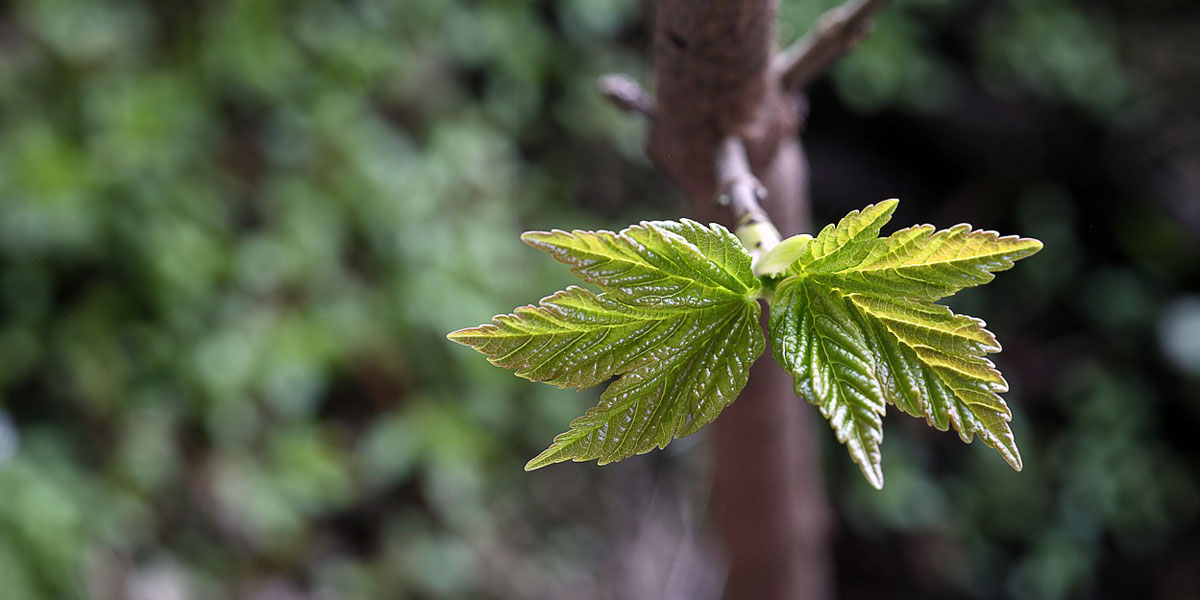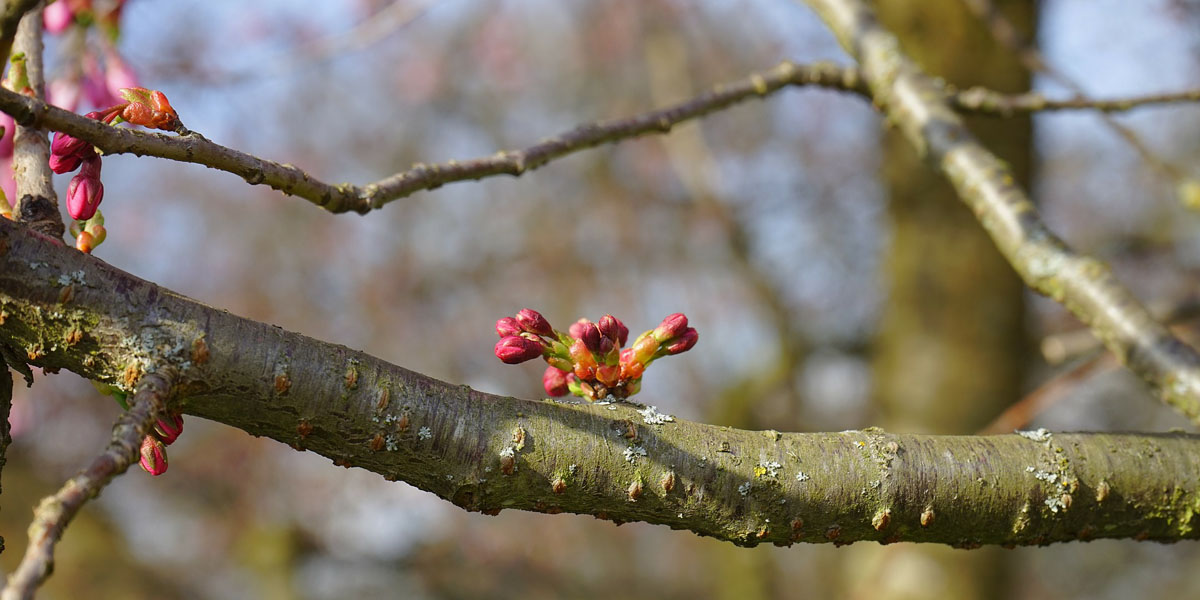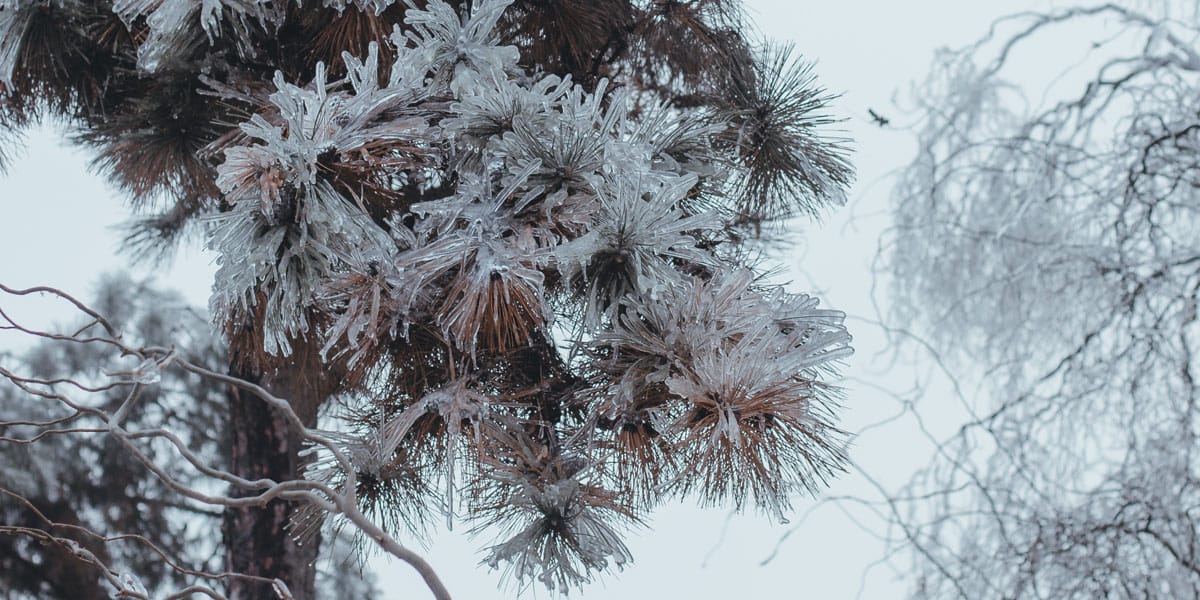Eventually, almost all trees will need pruning, such as for size, shape, pests or disease, storm damage, or to keep a tree from becoming a hazard to others. And along with pruning comes the chance of pruning mistakes that can seriously damage, or even kill, a tree.
The biggest pruning mistake most people make is wounding their trees with incorrect cuts. Done improperly, pruning cuts start a cycle of tree damage and decline that can be difficult to reverse.
Below, you’ll find information that will help you properly prune your trees and keep them growing strong.
TREE PRUNING BASICS
Before even picking up your pruning tools, ask yourself why you are pruning your tree and what results you expect. For example, maybe you want to:
- adjust the shape or overall size of the tree,
- improve the tree’s health,
- remove damaged or potentially hazardous branches,
- get more flowers or fruit,
- encourage more new growth, or
- open up a view
Once you have a clear goal in mind, you can decide how best to achieve your desired results. The location and type of pruning cuts you make should be tailored to your goal and achieved with the fewest possible cuts.
Not sure exactly why you’re planning to prune? Instead of assuming a tree needs pruning, ask one of the Certified Arborists at Alpine Tree for an evaluation. We’ll inspect your tree and let you know what should be done to meet your needs.
Another basic pruning tip is to make sure that your pruning tools are sharp and properly adjusted. Dull blades and improperly balanced cutting tools can tear bark and leave jagged edges on cuts, making the tree vulnerable to pests and diseases.
MAKE THE RIGHT TYPE OF PRUNING CUTS
There are three basic types of pruning cuts: removal, reduction, and heading cuts. Each cut has a purpose and a result, and each cut needs to be deliberate.
- A removal cut takes out an entire branch at its branch collar, or base, opening up a tree’s crown
- A reduction cut shortens a main branch back to a junction with a smaller, lateral branch, and guides the direction of future growth
- A heading cut shortens a main branch back to a point between lateral branches, and is generally a cut of last resort, or used in very particular circumstances. Heading cuts and “topping” are two of the most damaging procedures inflicted on trees.
Professional tree pruners are trained to visually evaluate a tree and know when and where to use these types of cuts without damaging a tree’s structure or health.
Beyond that, you’ll find that there’s more to it that just the type of pruning cut; there’s also the when and how of pruning cuts.
WHEN TO PRUNE TREES

When to prune is important, as pruning stimulates growth. If the new shoots appear in early fall, they will often die when frost arrives.
Timing to avoid winter-kill
In general, you should avoid pruning in early fall (before trees drop their leaves and enter dormancy). Pruning cuts stimulate new growth. When you prune in early fall, that new growth will be killed by the first heavy frost. The fall growth stimulated by pruning uses stored energy reserves at a time when a tree’s energy production is shutting down for winter dormancy. The dieback of pruning-stimulated growth from a freeze means that the tree has wasted valuable stored energy.
Timing for spring-flowering trees
Depending on your tree species, pruning in fall may also remove the next year’s flower and leaf buds that your tree has already made during its period of summer growth. These buds stay dormant through winter and emerge the following spring. The smooth, shiny leaf buds of the horse chestnut, or genus Aesculus, are good examples of summer growth that overwinters and emerges the following spring.
If you make pruning cuts that remove these dormant buds, you risk losing spring blooms. Your tree will also need to draw from its energy stores to produce replacement foliage for photosynthesis.
Timing to prevent diseases
Even more importantly, pruning cuts you make at the wrong time of year – even good cuts –leave your tree at risk for insects and disease pathogens to enter open pruning wounds.
For example, oak wilt and Dutch elm disease are examples of fatal, insect-borne pathogens that can enter open tree tissue. After entering a vulnerable tree, these diseases can spread from an infected tree to a healthy one through their entangled root systems. That’s why pruning for oaks and elm trees is best done in late fall through early spring when the disease-carrying pests are no longer a threat.
Pruning in late winter or early spring
Ideally, try to time your tree pruning with the first surges of tree growth after winter dormancy. This late-winter or early-spring period is when the tree’s vascular system gets to work making the new year’s growth and it has energy available to seal off pruning cut wounds.
Unsure about how to estimate the dormant period for your trees? Ask your local tree care professionals at Alpine Tree!
Note: Tree care professionals often do extensive pruning during winter. Done correctly, this is an excellent time to prune trees. However, we don’t recommend that homeowners do this unless they’re experienced pruners.
HOW TO PRUNE LARGE TREE BRANCHES
Not all branches are small enough to cut with pruning shears or loppers. When you need to make pruning cuts on large branches, always follow this three-step process:
- First, make a shallow cut on the underside of the branch, just beyond the branch collar. This will act as a barrier, preventing the bark from ripping if the branch falls while being cut.
- Second, cut through the branch two to four inches beyond the branch collar, removing the branch and leaving a stub.
- Finally, cut the stub off by cutting through the branch just beyond the branch collar, to meet the first underside cut.
All tree care professionals follow this process when removing large branches. And remember, the larger the branch and the higher it is, the greater the risk of injury to both the tree and the person doing the pruning. We recommend hiring a tree service professional to remove large branches to avoid catastrophic damage or injury.
What’s Next?
Now that you know the basics of why, how and when to make pruning cuts, take a close look at your trees. If they need pruning, can you manage it yourself? Do you have the tools to do it safely? Are you confident that you can make the correct types of pruning cuts at the right time and in the right place?
Trees are an investment that takes 20 years or more to reach full maturity. To get the greatest return on that investment, it’s best to hire a professional tree pruning company to keep your trees healthy, safe and beautiful.






